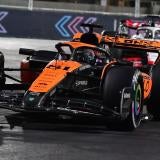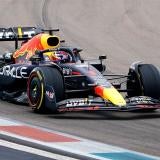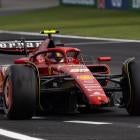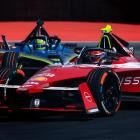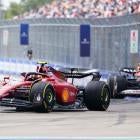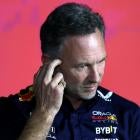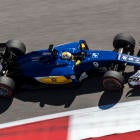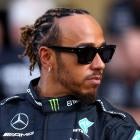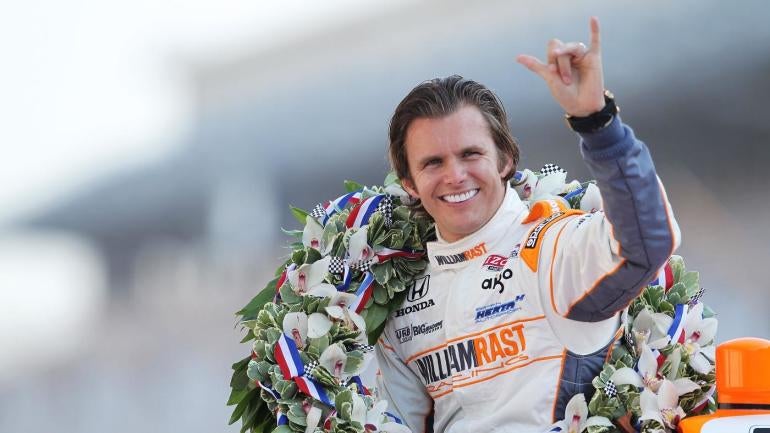
With modern technology and forward thinking having rendered auto racing perhaps the safest it's ever been, the concept of dying in a race car has become increasingly alien to an entire generation of drivers and fans alike. So, when the specter of death does indeed strike at a racetrack, it leaves a scar that hurts as deeply as any that has been left before -- as is evidenced by the example of Dan Wheldon.
This Saturday marks a full 10 years to the date that Dan Wheldon, a two-time Indianapolis 500 winner and the 2005 IndyCar Series champion, was killed in a horrific crash during the final race of the 2011 season at Las Vegas Motor Speedway. Wheldon, a popular English driver and one of open wheel racing's star drivers of the 2000s, has never been forgotten: As evidenced by the tributes that poured in to mark the 10th anniversary of his untimely death.
You'll always be our Lionheart. pic.twitter.com/aXKIeSsaYC
— NTT INDYCAR SERIES (@IndyCar) October 16, 2021
"10 years my brother ... Think about you and our adventures every day," wrote IndyCar great Tony Kanaan on Twitter. "10 anos sem vc meu irmão. (10 years without you my brother)"
10 years my brother . @danwheldon . Think about you and our adventures every day
— Tony Kanaan (@TonyKanaan) October 16, 2021
10 anos sem vc meu irmão. pic.twitter.com/GlVuy8p7C0
A native of the village of Emberton in England, Wheldon was part of a generation of drivers who made their way to the United States to race in IndyCar due to the prohibitive costs involved in pursuing a Formula 1 career. Wheldon quickly became a young star in the American open wheel ranks, winning IndyCar Rookie of the Year honors in 2003 before a 2005 season that saw him win six races, his first Indianapolis 500, and the IndyCar Championship.
After leaving Panther Racing at the end of the 2010 season, Wheldon began the 2011 on the sidelines and without a ride, putting together a one-off deal to drive for former teammate Bryan Herta in the Indianapolis 500. In a race which marked the Indianapolis 500's centennial anniversary, Wheldon would pull off a stunning victory in one of the most remarkable finishes in the history of the race. Rookie J.R. Hildebrand was leading when he went wide in the final corner, slamming the wall and destroying the right side of his car. Wheldon, who was running second, drove past the same car he had driven the year before to take the checkered flag, becoming the first driver ever to win the Indianapolis 500 by leading only the final lap.
After winning his second Indy 500, Wheldon moonlighted as an analyst and pit reporter for NBC Sports. But he sought to get back behind the wheel, and a path for him was cleared through a promotion by then-IndyCar CEO Randy Bernard. Seeking to make the IndyCar season finale at Las Vegas a special event, the sanctioning body offered Wheldon a $5 million prize to be split with a fan if he could win the race after starting from the rear of the field.
"I probably had 15 voice messages on my phone from him, begging me to be in that race," Bernard told Marshall Pruett of RACER. "And then when it came together, Dan was like, 'Thank you, thank you, thank you for giving me this opportunity. This is amazing.'"
Wheldon was hired by Sam Schmidt Motorsports for the final two races of the season, driving the No. 77 to a 14th place finish at Kentucky before starting at the rear of the 34-car field at Las Vegas. The size of the field combined with high speeds and pack racing within the close confines of Las Vegas created safety concerns entering the race, which immediately turned out to be justified.
On lap 11, contact between two cars in turn 1 triggered a colossal 15-car melee, which collected Wheldon when he made wheel-to-wheel contact with another car trying to avoid the crash. Wheldon's car was launched into the air, flipping over and gyrating to the point that Wheldon's car climbed onto the turn 2 wall with the driver's compartment facing the catchfence. Wheldon's car collided with a fence post, which went through his cockpit and struck Wheldon in the head.
Wheldon was quickly airlifted to a local hospital, where he was pronounced dead on arrival at the age of 33. The race was not resumed.
Today and every day we think of Dan Wheldon.
— Las Vegas Motor Speedway (@LVMotorSpeedway) October 16, 2021
And especially today on the 10-year anniversary of the loss of a great father, husband, son, brother, friend, and competitor.
Forever on our minds. Forever in our hearts. Lionheart forever. pic.twitter.com/8jfemH8iSu
The lasting impact of Wheldon's accident is still felt throughout IndyCar today. His death led to a movement against high speed ovals, which are now hardly a part of the IndyCar schedule. The magnitude of the crash that took Wheldon's life had a profound impact on those involved, as driver Townsend Bell -- now an IndyCar TV analyst -- admitted he dealt with trauma for years afterwards.
"It took me a few years to not think about that every day," Bell told RACER. "I'm not sure I know the clinical definition of post-traumatic stress disorder, but I would imagine that's what I was experiencing for a few years. It was a really unpleasant event for a lot of people. A really vivid and deeply disturbing kind of moment, etched in my mind, that I didn't really know how to deal with."
Wheldon's impact has also been felt through safety advancements not simply in IndyCar, but also in open wheel racing as a whole: in 2012, IndyCar debuted the DW12 chassis, which had been tested by Wheldon and was subsequently named in his honor. The chassis featured a new bumper and nerf bar across the back, which was specifically designed to help prevent cars being launched by wheel-to-wheel contact and the sort of accidents that killed Wheldon.
Wheldon's accident, along with separate ones that killed Formula 1 driver Jules Bianchi and IndyCar driver Justin Wilson, was also a factor in the introduction of halos and aeroscreens to open-wheel cockpits as a means of protecting the driver's head from flying debris or other intrusions. Such objects have since been praised as having saved numerous drivers, most notably Romain Grosjean, who credited the F1 halo with saving his life when his car crashed into and penetrated the underside of a steel barrier during the 2020 Bahrain Grand Prix.
But Wheldon's legacy is perhaps felt in no greater way than through his two sons, who have followed their father into racing. Sebastian and Oliver Wheldon, now 12 and 10 years old, are currently competing in karting and were both signed to developmental deals by Andretti Autosport earlier this year. Wheldon had driven for Andretti early in his career, and had signed on to return to the team for the 2012 season to drive the car that was being vacated by Danica Patrick's full-time move to NASCAR.
"We'll see where it takes them," Susie Wheldon, Dan's widow, told the Las Vegas Review-Journal. "Obviously they aspire to race professionally one day. As they get older, I think they'll understand things a little more and be able to really decide if it's something they want to do, or it's something they feel they have to do to stay connected to their dad."
In all, Dan Wheldon's racing career included 16 IndyCar wins with two Indianapolis 500 triumphs, the 2005 IndyCar Championship, as well as a win in the 2006 Rolex 24 at Daytona and several championships in developmental series. In 2019, Wheldon was named a member of the Indianapolis Motor Speedway Hall of Fame.
Wheldon is at rest at Calvary Catholic Cemetery in Clearwater, Florida. His epitaph is a poem by Ralph Waldo Emerson, which states that "...To know even one life has breathed easier because you have lived, this is to have succeeded."
Dan Wheldon's grave is in Clearwater, Florida (not my photo), and his epitaph is tremendous: It's a poem by Ralph Waldo Emerson which I think encapsulates being a man beautifully.
— Steven Taranto (@STaranto92) October 16, 2021
What a life he led. pic.twitter.com/eSmzgTI9eH







